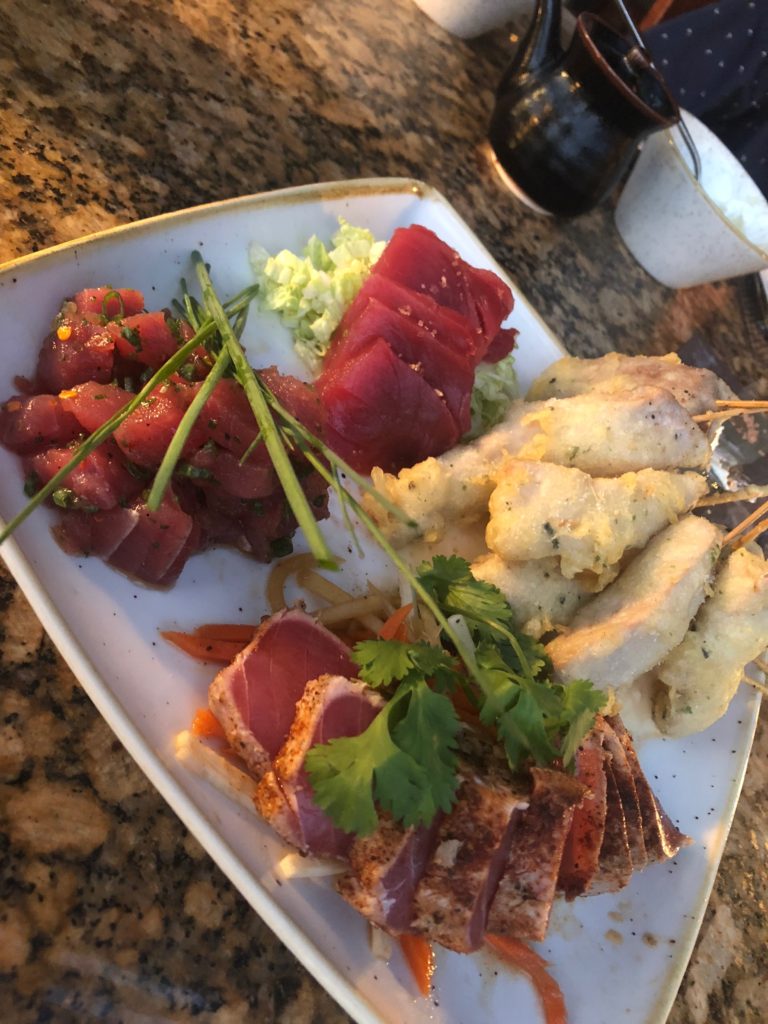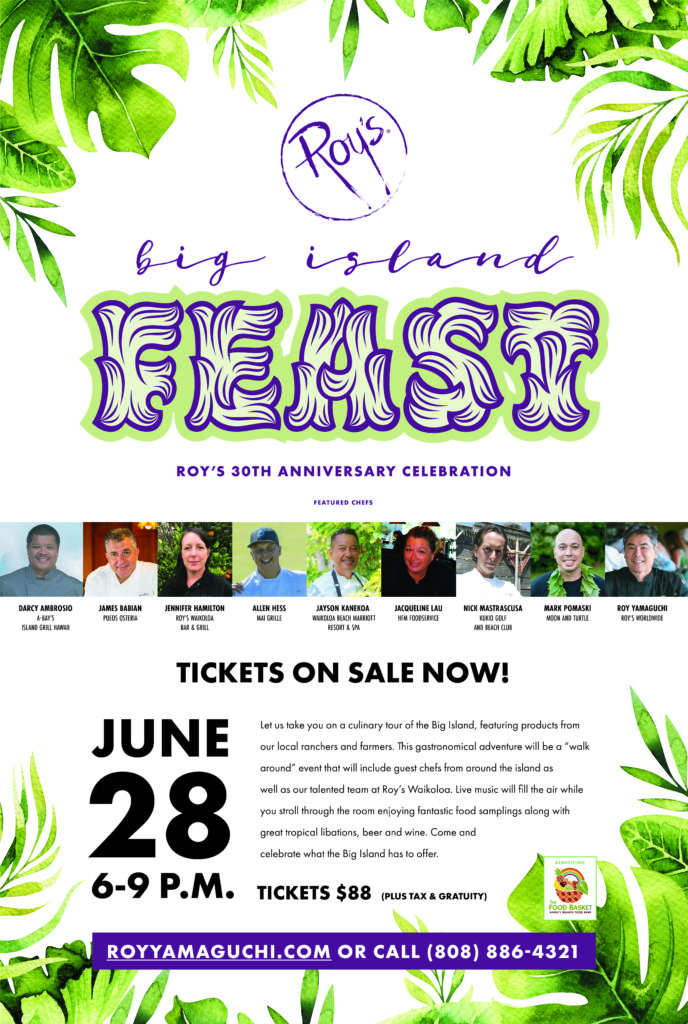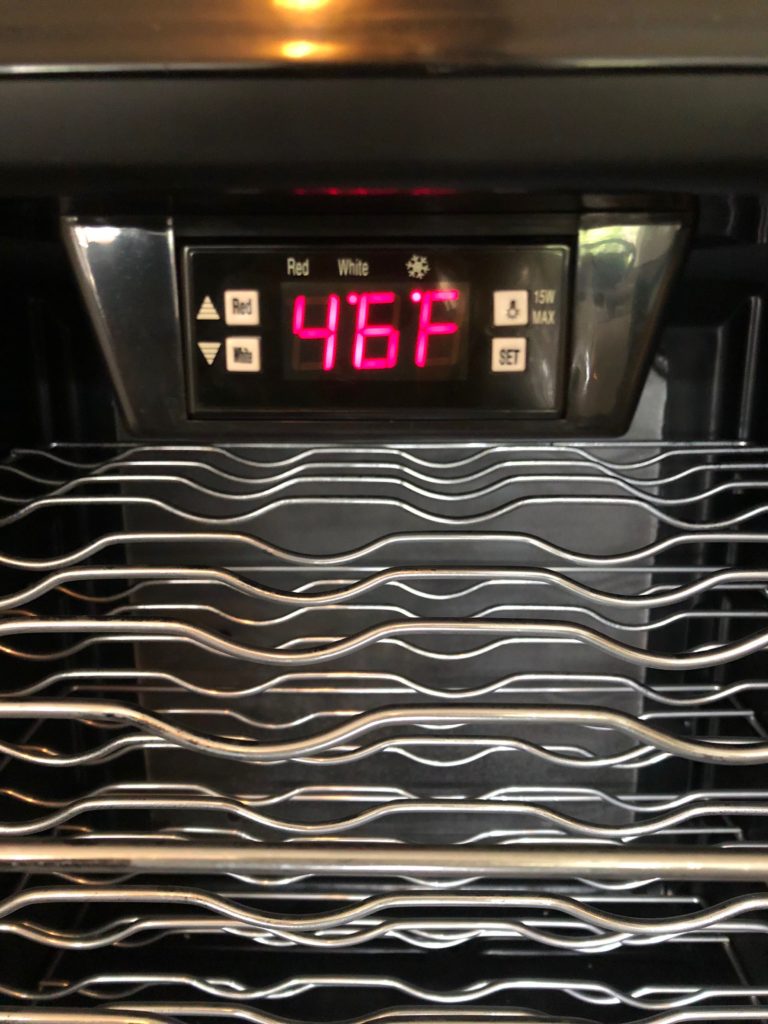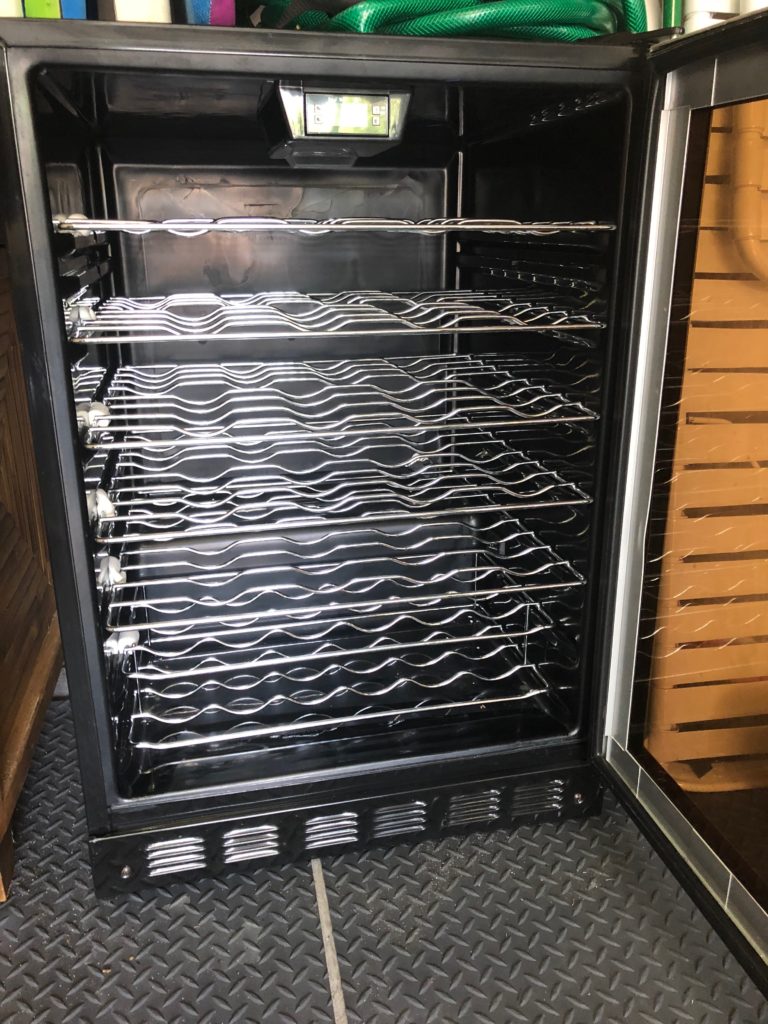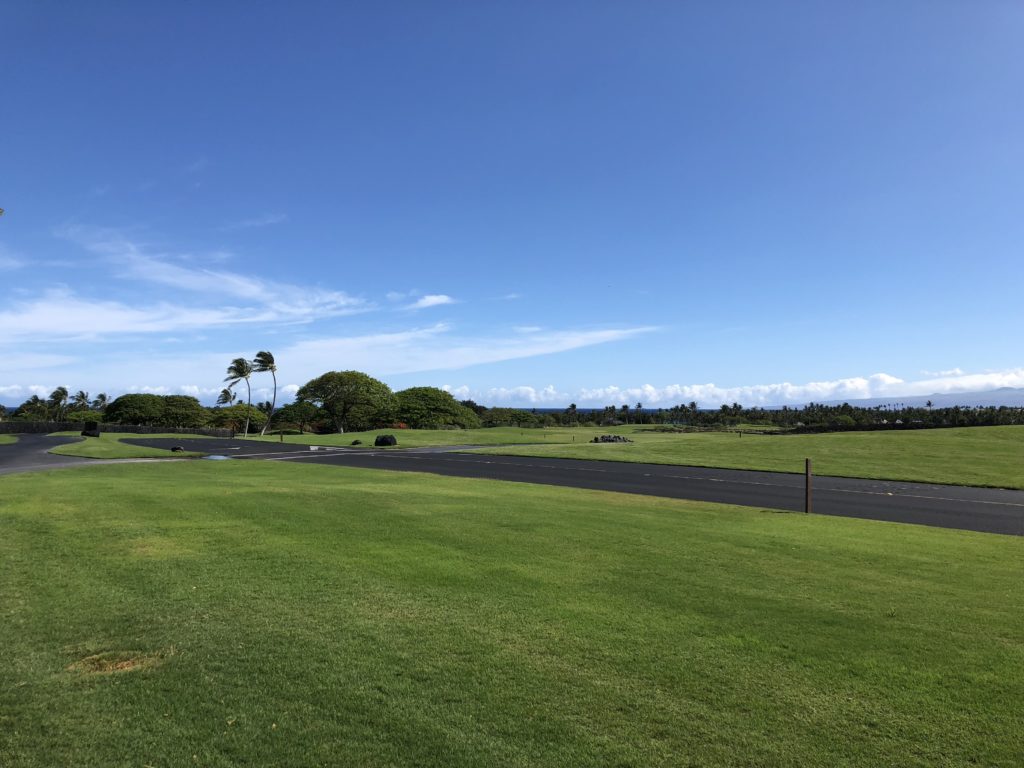
|
A sergeant with the Hawaii Police Department’s Special Response Team, who reportedly was injured in a shootout at South Point, is carried toward Hilo Medical Center after being medivaced late Friday afternoon. (HOLLYN JOHNSON/Hawaii Tribune-Herald)SOUTH POINT — A days-long, islandwide manhunt culminated Friday in South Point when the Hawaii Police Department’s Special Response Team engaged in a shootout with Justin Waiki, the man wanted in the shooting death of Puna patrol officer Bronson Kaliloa earlier this week. According to Hawaii Police officials, the shootout ended with Waiki dead, a woman injured and a sergeant with the Special Response Team medevaced to Hilo Medical Center with gunshot wounds. As of Friday evening, the sergeant was reported to be in stable condition and going into surgery. Three people were taken into custody at the scene on suspicion of hindering prosecution.
“I know that our island community and entire state has been following this event, and we at the Hawaii Police Department want to express our thanks for the thoughts and prayer,” said Police Chief Paul Ferreira during a press conference Friday night in Hilo, “along with your hopes. We have been able to bring this nightmare to an end.” Police have been following up on tips of Waiki’s whereabouts throughout the week. On Friday, they received information that the 33-year-old was in the South Point area of Ka‘u. When SRT and a special taskforce arrived on scene, checks were conducted of the area and a checkpoint was established to search vehicles coming in and out of South Point Road. At 2:45 p.m., checkpoint officers stopped a Toyota 4Runner being driven by 35-year-old Jorge Pagan-Torres. Also in the vehicle were Krystle Ferreira, 29, of Waimea, Malia Lajala, 30, of Hilo, and a third woman who has not yet been identified. According to police, Waiki was hiding under a blanket in the very back of the vehicle. When the SRT sergeant, a 12-year police veteran, opened the back lift gate the suspect “emerged from under the blanket and shot the officer.” “He appeared to have been shot in the chest and arm,” police said Friday evening. “Angle of the shot allowed bullet to go past his bullet proof vest, striking his chest.” At that point, other SRT members returned fire on Waiki, killing him. The woman, whom police have not identified at this time, also suffered a non-life-threatening gunshot wound and was taken to Hilo Medical Center for treatment. Pagan-Torres, Ferreira and Lajala were arrested on suspicion of first-degree hindering prosecution, and were transported to Kealakehe police station. “The men and women of the Hawaii Police Department rose to the occasion in keeping our community safe,” Ferreira said. “You can sleep well tonight knowing that the search is over for this individual that had taken the life of Officer Bronson Kaliloa just days ago.” On Friday afternoon, Kaliloa’s family released the following statement to KHON2: “The family would like to thank all the responders who have put their lives at risk to help bring us closure. Our love and thoughts go to the injured officer and his family and we will pray that the Lord protect and heal him.” On Friday afternoon, police were diverting traffic on South Point Road onto Kamaoa Road. Some residents were gathered along the sides of the country road chatting. The scene of the incident was about 2 miles from where the roadblock was set up. “Not safe anywhere, no matter where you live,” said John Jeffries, who lives about a mile from where the shooting occurred. Despite that, everyone was glad the manhunt had come to an end. “I’m happy they got him,” said resident Thalia Naidu. “Everyone will sleep easier tonight.” The manhunt for Waiki started Tuesday evening at 9:47 p.m. after police say he shot officer Kaliloa, 46, beside Highway 11 in Mountain View when the officer approached a vehicle during a traffic stop. Waiki allegedly got out of the car and shot Kaliloa, a 10-year veteran of the department, in the neck and leg. An autopsy determined the cause of death to be torn carotid artery caused by a gunshot wound, and the manner of death homicide. Waiki, whose last known address was in Las Vegas, was being sought at the time of the traffic stop on a no-bail warrant for revocation of his bail conditions. The first chance to pursue Waiki since Tuesday’s fatal shooting happened Thursday evening when police received reports of a sighting in Kailua-Kona. At 4:58 p.m., police responded to Ka Hale Kahaluu on reports of shots fired where two individuals in a truck led police on a chase through South Kona ending at Middle Keei Road where the suspects fled on foot. After hours of combing the countryside, Harvey Damo Jr., 25, of Hilo, and Shevylyn Klaus, also 25 and of Hilo, were taken into custody. Damo was treated for a non-life-threatening gunshot wound at Kona Community Hospital. Damo and Klaus were arrested on suspicion of second-degree theft. As of Friday night, police were still trying to determine if Damo and Klaus were known associates of Waiki and if the fugitive was involved somehow in Thursday’s pursuit. “I’m glad they caught the alleged assailant,” Gov. David Ige told West Hawaii Today on Friday evening. “Certainly, I do thank the Hawaii County Police Department for their quick action in apprehending the suspect and our thoughts and prayers are with the officer who was injured.” Officers who discharged their weapons in Friday’s shooting have been placed on paid administrative leave pending the outcome of internal investigations. Maj. Robert Wagner said Friday night that if any civil right violations are suspected, they will be probed by federal officials.
“There is legislation that is in-the-making in the Legislature for an outside committee or outside group (to) review police shootings but (it’s) not in place yet,” he said. 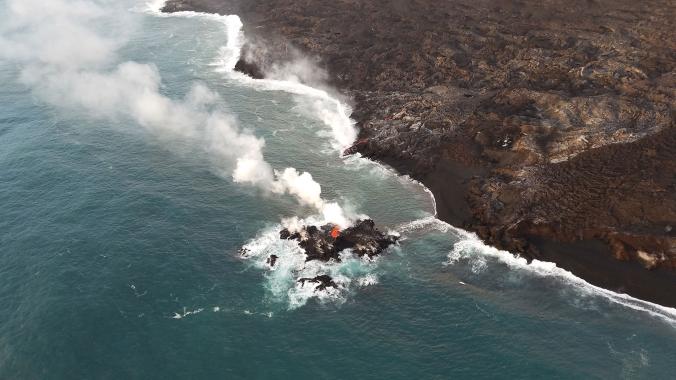 The Kilauea eruption briefly formed this small island off the coast of Hawaii. Last week, the ongoing Kilauea eruption spawned a tiny addition to the Hawaiian island chain. A little baby islet, only about 20 or 30 feet from edge to edge, popped up off the coast of the Big Island—seemingly ready to strike out on its own adventure in the wide blue Pacific. But the islet didn’t last long. Only a few days later, a fresh pump of lava filled in a track between the coast and the baby isle, turning it into isthmus instead. The island’s brief existence is only the latest entry in a serial drama: the millions-year-long origin sto The first glimmer of the very first Hawaiian island poked up out of the ocean floor over 60 million years ago. A fountain of hot melted rock—magma—from deep in the mantle, streamed upward until lava bubbled up into the sea. The new mound of hot rock kept growing a few inches taller each year until, after 50,000 or 100,000 years, it breached the surface of the Pacific Ocean. Et voilà, an island was born. The magma comes from a “hot spot” deep in Earth’s mantle. The hot spot seems to be fixed in place, percolating like a constantly boiling kettle that provides a steady supply of magma coursing upward toward Earth’s surface. But the tectonic plate that sits on top of the mantle drifts slowly on geologic timescales—currently, it’s moving a few inches northwest every year. As it drifts, it drags the islands far enough away that they’re cut off from the magma source below. At that point, the volcanoes on those islands go extinct. The older islands of Hawaii—like Kauai and Ni’ihau—used to sit where Kilauea is today about five million years ago. The oldest islands in the long archipelago (at least, the ones that are still above the water’s surface), about 3,000 miles to the northwest, were born about 60 million years ago. The island of Hawaii is the youngest in the Hawaiian chain—at least, of those above the waves. Lo’ihi, an island-in-progress growing off the southern shore of the Big Island, is currently underwater and should emerge in about ten thousand years. The Big Island was built by five different volcanoes. Two of those volcanoes have shifted far enough from the magma source that they’ve gone extinct, leaving three that are currently active: Mauna Loa, which last erupted in 1984; Hualalai, which last erupted in 1801; and the current center of attention, Kilauea. BY An enormous MAHALO from Barbara and Rob Kildow to all of you who generously joined them in making this Big Fix dream come true. 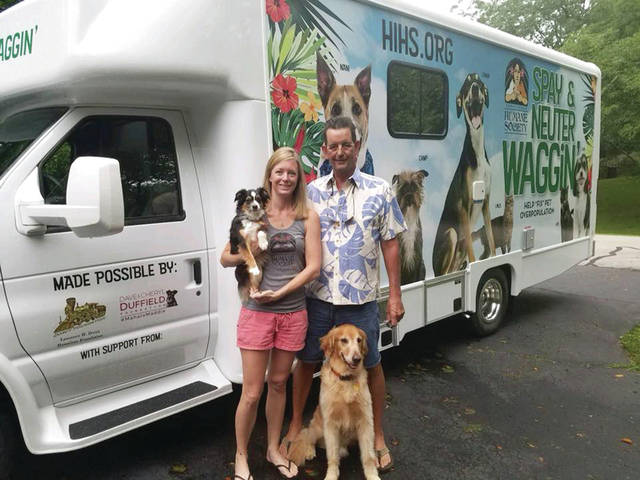 Whitney and John Sickels stand with the new Hawaii Island Humane Society Spay & Neuter Waggin’. (Photo courtesy Facebook/Special to West Hawaii Today) KAILUA-KONA — Hawaii Island Humane Society employee Whitney Sickels and her father, John, just completed a cross-country trip from Ohio to California. But this was no ordinary road trip. The father and daughter were driving the humane society’s new spay and neuter mobile clinic from Columbus to Long Beach on the West Coast, where it was put on a container ship headed for Hilo, with an expected July 13 arrival. La Boit Specialty Vehicles customized the $200,000, 26-foot van to specifications and needs — but the price tag to transport the vehicle to Hawaii Island was $20,000. So Sickels decided to hop a plane and join her father on the mainland, driving the vehicle 2,400 miles across 10 states at a fraction of the cost. The Spay & Neuter Waggin’ emblazoned with the HIHS logo and photos of adopted pets caused quite a stir on the journey. “We got lots of smiles and waves along the way,” Sickels said, noting people were surprised when they learned the vehicle’s final destination. A Facebook fundraising page documented their adventure, soliciting donations en route. Sickels said community support exceeded expectations, raising $3,150 to support the Humane Society. Sickels secured a $100,000 matching grant from the Laurence H. Dorcy Hawaiian Foundation. The community responded by raising the matching funds to purchase the $200,000 vehicle. She was also able to obtain an additional $100,000 from the Dave and Cheryl Duffield Foundation to stock the van with supplies. “With that money, we will be able to start clinics immediately on the island,” Sickels said. Part-time veterinarian Kelly Korth performs spay-and-neuter clinics at the Kailua-Kona shelter, and will head up the mobile clinic. The mobile clinic will allow pet owners in more remote areas access to free spay-and-neuter services once a week, starting in North Kohala. The van runs off a generator, so the only thing they will need is a place to park. “We are so excited about its arrival!!!” HIHS executive director Donna Whitaker said via email to West Hawaii Today. “We are ordering supplies and working on a tentative schedule for July, August and September that will take us to spots around the whole island and we plan to offer a day per week at our Animal Community Center,” Whitaker said. HIHS will be accepting appointments online, where a calendar of locations will be posted. In addition to the free same-day spay/neuter service, microchipping will be available for $10. When the van is not being used for sterilization procedures, it will act as a traveling adoption center and educational tool. Sickels said HIHS hopes to take the vehicles to schools, showing keiki the setup and explaining the importance of the spay/neuter program. “The more spay and neutering we can do in the community, the better it is for the community,” said Sickels. “We reduce euthanasia and that’s a win, win, win for everyone — the community, pets and HIHS.” Almost all of us have seen the Hualalai Realty’s “Living at Hualalai” magazine around the campus. We just wanted to give you a little background on who puts these together. There is a realty team consisting of Vivian Tobias and Bryanna Pasco and a magazine consultant/writer Margaret Kearns (That’s right, the same Margaret who used to run all the Club’s activities in the early years). Living at Hualalai is a lifestyle and real estate publication for Members and prospective Members of Hualalai Resort. The magazine is complimentary and available in public areas throughout the resort and, of course, copies are available in the real estate office. This issue features the newly enhanced Sports Club, the Resident’s Beach House, Designer Profile and Design Tips, along with a section devoted to residential properties available now. Here’s the cover. Click on it and you’ll be taken to an online version of the magazine.
HILO — With no visitors to gaze in awe at its splendor, Kilauea caldera is often shrouded in a peaceful, though deceptive, silence. Wisps of gas and dust rise out of the ever-growing Halema‘uma‘u crater, now double in size from only two months ago, and white-tailed tropic birds, which make homes in its cliffside, glide above its edge. But the stillness seen Thursday morning during a media tour of the summit was merely an interval in a dynamic process that continues to reshape the volcano, astound scientists and keep Hawaii Volcanoes National Park closed. “We’re used to looking at changes on the order of centimeters every year,” said Kyle Anderson, a research geophysicist with the Hawaiian Volcano Observatory. These days, geologists are seeing parts of the caldera floor drop as much as 30 feet per day, which he called staggering. That process is being driven by the withdrawal of magma from the summit that followed the start of the lower East Rift Zone eruption on May 3. To date, that eruption has claimed at least 657 homes. The loss of molten rock causes Halema‘uma‘u, which sits inside the caldera and until recently was home to a lava lake, to drop like a piston about once a day as it loses the magma chamber that provided it support. These events coincide with a burst of ash, some of which cakes the overlook at Jaggar Museum, and energy that can be equivalent to a magnitude-5 earthquake. Anderson said the volume of the crater, which has dropped more than 1,300 feet since this process began, is expanding by more than 10 million cubic meters per day. Tina Neal, HVO scientist-in-charge, said the amount of change being witnessed is unprecedented in modern history. “But change is what volcanoes do,” she said. It’s also giving scientists an opportunity to learn more about the volcano as it feeds magma to the lower East Rift Zone. “It truly is on a personal level pretty mind-blowing, and I have mixed emotions about it,” Neal said. “It really is an inspirational event … And we have so much to learn from this that will help future generations and other volcanologists around the world deal with the same situation. It’s a real mixture of sadness and loss and awe and challenge.” As the volcano ramps up to the next collapse-driven eruption, smaller quakes, as many as 40 per hour, occur at the summit, while larger temblors have formed narrow cracks that meander from the overlook wall to the museum and stretch across the visitor parking lot. These hazards keep most of the park closed — only the Kahuku unit remains open — and officials say they don’t know when the main park area, one of Hawaii Island’s main attractions and economic drivers, will be safe to welcome visitors again. But they do know it won’t look the same. “It’s like a hurricane that’s not over,” said Ben Hayes, the park’s chief of interpretation. “If you look at the amount of damage being sustained, we’re looking at a very lengthy recovery time.” The park has been closed since May 11, making it the longest closure in the park’s history. Rhonda Loh, park natural resource chief, said a full assessment of the damage to roads and facilities can’t be done until the activity of the summit stabilizes. “We’re really wanting to see, to hear, from the scientists, the (U.S. Geological Survey) scientists, when things have entered a new phase, when conditions have changed, and then, at that point, we could be starting to look at a recovery and what will need to be done … to reopen the park safely,” she said. While geologists don’t expect the Jaggar Museum and HVO building to fall into the caldera, Loh said it also won’t be known if those facilities can be reused until a structural assessment is done. “We don’t know,” Loh said, when asked if Jaggar will reopen someday. “We really don’t know until we can do those assessments. It’s a lot of speculation.” The closure hasn’t stopped people from trying to see the volcano. John Broward, the park’s chief ranger, said about two people a day are stopped in the park, with about 30 citations issued so far. He said people walk in through side trails or through the re-established Chain of Craters Road. Anderson said they also don’t know when these collapse-driven eruptions will stop. He said they likely will continue as long as more magma is leaving the summit than being supplied to it. Anderson noted the collapses at the summit could outlast the lower Puna eruption since magma might be getting stored somewhere in the rift zone, in addition to feeding the fissures. And when the lower Puna eruption will stop remains anyone’s guess. But the data scientists are gathering now will be used for years to come and continue to help them fine-tune their predictions that could help save lives. Anderson said they already are changing the way they think about these explosive events. For instance, he said groundwater intrusion is no longer thought to be a significant contributor to the eruptions. “The measurements we are now making will inform scientific studies for generations and I think will tremendously improve our understanding of these systems,” Anderson said. “I think people will be talking about this and writing about this for generations.” Thanks to Eve Bernstein
KAILUA-KONA — The earth moved in Kailua Village Monday, as dignitaries and business representatives scooped the first shovel fulls of dirt at the groundbreaking ceremony for Niumalu Marketplace, a new commercial development in the heart of Kailua-Kona. Safeway will relocate a few blocks makai and anchor the 14-building, 180,000-square-foot marketplace, which represents a roughly $95 million investment in West Hawaii. Niumalu Marketplace will be situated on 20 acres off Henry Street, adjacent to Lanihau Shopping Center. Thomas Reiter, of Sentinel Development, explained the site plan is considerably more elaborate than a one-stop grocery shop. “We really envision this to be the new community center,” he said. “So you won’t just come get your groceries and leave, but there’ll be some restaurants and some other interesting shops.” As to how many storefronts developers will create, and what rent will run, those numbers are still difficult to project. Jason Schwartz, of Blue Vista Capital, ballparked the number of businesses likely to occupy the center at around 20. National tenants not yet arrived to Kailua-Kona are likely to assume the larger spaces, he said, while smaller spaces will probably attract a combination of national groups and local groups that want to relocate to what he described as a congregational “centerpiece” the area has been missing. Developers project construction of Niumalu Marketplace should create around 300 long-term, temporary construction jobs, with several hundred part-time and full-time positions available in the site’s various businesses once construction is completed. A few characteristics of the site are already set in stone. Safeway will occupy a 63,000-square-foot building that George Glukfeld, Hawaii district manager, said will feature an expanded produce section and butcher block. The larger space should also allow the store to at least double its workforce from the 100 people it employs now to between 200-250 employees when the new site opens. “Safeway will open up in the first quarter of 2020,” Schwartz said. “By mid-2020, the whole center will be up and running.” The grocery chain’s new makai location will also include an 18-pump gas station that Glukfeld said will offer fuel rewards and should prove “competitive” with the fuel operation a few miles north at Costco. Schwartz credited Safeway in part with making the development viable, saying its presence had already aided in active discussions with a dozen potential tenants. And developers continue to look for prospective clients. “Anybody that’s interested, we’ll talk to you,” Schwartz said. Developers also credited Wendell Brooks, JLL’s Hawaii retail brokerage lead, as instrumental in the realization of Niumalu Marketplace. Five buildings on site will range between 12,500-23,000 square feet, two of which will be two-story structures, and there will be a total of 758 parking stalls. Reiter said site plans also include an outdoor community center in one corner of the property available for an array of different functions. Wendy Laros, executive director of the Kona-Kohala Chamber of Commerce, was hearing the specs on Niumalu Marketplace for the first time herself Monday. “That’s got to be good for the local economy,” she said. “Twenty new storefronts here in town — that’s a big deal.” Thanks to Eve Bernstein 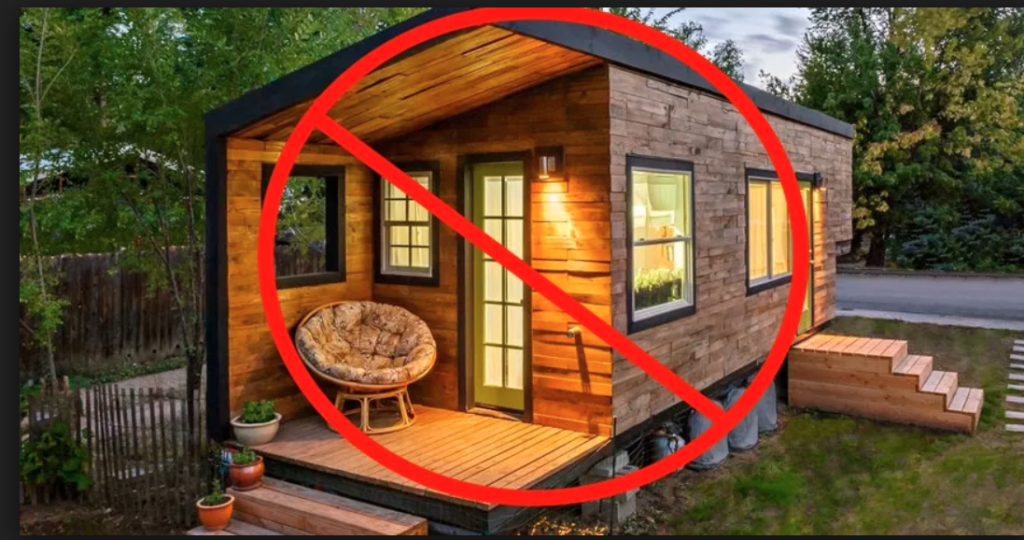 Nope, not this house. Cousins of member, Susan Mendelson, would like to rent a house with 5 – 6 bedrooms from December 21, 2018 – January 3, 2019 at Hualalai. If interested in renting contact Susan at susanm@lazygourmet.ca Continue reading Large House Wanted to Rent during Festive Morgan Suzuki, the PR director of the Four Seasons Hualalai on Hawaii’s Big Island, has been fielding a lot of calls from tourists about the Kilauea volcano lately. They want to know: What are the chances of being hit lava? Can they be suffocated by toxic vog (volcanic smog)? The Four Seasons is located near the tourist hub of Kailua-Kona – on the opposite side of the island of Hawaii from the volcano. “Once we assured them the lava wasn’t traveling 100 miles to our resort,” concerned visitors usually calm down and decide to keep their reservations, Suzuki told TIME. But some prospective visitors still decided to cancel their trips. The area affected by Kilauea’s lava flow encompasses only 9.5 square miles – on an island that’s about the size of Rhode Island and Delaware combined. Local business owners say that public misconceptions about the volcano’s effects and a basic misunderstanding about the geography of Hawaii is keeping tourists away and hurting businesses even far from the danger zone. Tour operators around the volcano have suffered huge drops in bookings, but even many companies far away in Kailua-Kona told TIME they’re experiencing losses of about 30% for the start of tourist season.
“We all have our homes and properties so I don’t want to compare the two,” Jason Cohn, the Vice President of Sales and Marketing for Hawaii Forest and Trail, which operates nature tours across the Big Island, said. “But from an economic standpoint more damage has been done by misconceptions that have been perpetuated than by the volcano.”
Local business owners say that public misconceptions about the volcano’s effects and a basic misunderstanding about the geography of Hawaii is keeping tourists away and hurting businesses even far from the danger zone. Tour operators around the volcano have suffered huge drops in bookings, but even many companies far away in Kailua-Kona told TIME they’re experiencing losses of about 30% for the start of tourist season. “We all have our homes and properties so I don’t want to compare the two,” Jason Cohn, the Vice President of Sales and Marketing for Hawaii Forest and Trail, which operates nature tours across the Big Island, said. “But from an economic standpoint more damage has been done by misconceptions that have been perpetuated than by the volcano.” All six local businesses owners and operators interviewed by TIME for this story mentioned a Fox News report that Oahu, a different island more than 225 miles away, was being evacuated because of the eruption. “It’s just the illusion that we are in a doomsday scenario out here and were not. You know if I watched the news and didn’t anything about geography I would probably cancel my trip to Hawaii too,” Greg VanderLann, the owner of UFO Parasail in Kailua-Kona, said. Tourism is responsible for nearly 30% of the economy on the island of Hawaii. VanderLann said the drop in tourism from misunderstandings about the volcano has hurt many local residents. “Jobs are lost and we rely on tourism. That’s the biggest chunk of our industry out here — local families are struggling right now,” he said. VanderLann said bookings at his company have dropped about 35% since the end of May. Fire breaks out at the forest as dozens of structures, including at least nine homes, have been destroyed by scorching lava flows following a massive volcano eruption on Hawaii’s Big Island, USA on May 8, 2018. Hawaii’s Kilauea volcano erupted Thursday triggering a series of earthquakes that have continued to rattle the island as burning blood-red lava spewed hundreds of feet in the air from cracks in the ground. The strongest earthquakes were felt Friday when a 5.6-magnitude temblor was followed an hour later by a 6.9-magnitude earthquake, according to the U.S. Geological Survey (USGS). Ross Birch, Director of the Hawaii Visitors Bureau for the Island of Hawaii, said it is still too soon to tell if the Kilauea eruption will do long-term harm to the tourism industry and overall economy. He stressed that the rest of the island is still open for business, and there was no reason to change travel plans. Already there is a glimmer of hope that tourism operations will be business as usual again. The Norwegian Cruise Lines ship Pride of America began making weekly port stops to the island on June 12 – the first cruise ship to stop at the island since the eruption started in May. Even Gary Marrow, who operates KapohoKine Adventures – which specializes in tours of Kilauea, as seen improvement. Throughout May and most of June his bookings were down 60%. He is hopeful once Pele, Hawaii’s goddess of volcanoes, finally quiets down, tourists will return in even higher numbers. “Our island is going to go nuts with tourism because everyone is going to want to come and see mother nature,” Marrow said. “This is how our wold was created, it’s how all of our islands were created and it’s a magical amazing thing to see.” Morgan Suzuki, the PR director of the Four Seasons Hualalai on Hawaii’s Big Island, has been fielding a lot of calls from tourists about the Kilauea volcano lately. They want to know: What are the chances of being hit lava? Can they be suffocated by toxic vog (volcanic smog)? The Four Seasons is located near the tourist hub of Kailua-Kona – on the opposite side of the island of Hawaii from the volcano. “Once we assured them the lava wasn’t traveling 100 miles to our resort,” concerned visitors usually calm down and decide to keep their reservations, Suzuki told TIME. But some prospective visitors still decided to cancel their trips. The area affected by Kilauea’s lava flow encompasses only 9.5 square miles – on an island that’s about the size of Rhode Island and Delaware combined. Local business owners say that public misconceptions about the volcano’s effects and a basic misunderstanding about the geography of Hawaii is keeping tourists away and hurting businesses even far from the danger zone. Tour operators around the volcano have suffered huge drops in bookings, but even many companies far away in Kailua-Kona told TIME they’re experiencing losses of about 30% for the start of tourist season. “We all have our homes and properties so I don’t want to compare the two,” Jason Cohn, the Vice President of Sales and Marketing for Hawaii Forest and Trail, which operates nature tours across the Big Island, said. “But from an economic standpoint more damage has been done by misconceptions that have been perpetuated than by the volcano.” Local business owners say that public misconceptions about the volcano’s effects and a basic misunderstanding about the geography of Hawaii is keeping tourists away and hurting businesses even far from the danger zone. Tour operators around the volcano have suffered huge drops in bookings, but even many companies far away in Kailua-Kona told TIME they’re experiencing losses of about 30% for the start of tourist season. “We all have our homes and properties so I don’t want to compare the two,” Jason Cohn, the Vice President of Sales and Marketing for Hawaii Forest and Trail, which operates nature tours across the Big Island, said. “But from an economic standpoint more damage has been done by misconceptions that have been perpetuated than by the volcano.” All six local businesses owners and operators interviewed by TIME for this story mentioned a Fox News report that Oahu, a different island more than 225 miles away, was being evacuated because of the eruption. “It’s just the illusion that we are in a doomsday scenario out here and were not. You know if I watched the news and didn’t anything about geography I would probably cancel my trip to Hawaii too,” Greg VanderLann, the owner of UFO Parasail in Kailua-Kona, said. Tourism is responsible for nearly 30% of the economy on the island of Hawaii. VanderLann said the drop in tourism from misunderstandings about the volcano has hurt many local residents. “Jobs are lost and we rely on tourism. That’s the biggest chunk of our industry out here — local families are struggling right now,” he said. VanderLann said bookings at his company have dropped about 35% since the end of May. Fire breaks out at the forest as dozens of structures, including at least nine homes, have been destroyed by scorching lava flows following a massive volcano eruption on Hawaii’s Big Island, USA on May 8, 2018. Hawaii’s Kilauea volcano erupted Thursday triggering a series of earthquakes that have continued to rattle the island as burning blood-red lava spewed hundreds of feet in the air from cracks in the ground. The strongest earthquakes were felt Friday when a 5.6-magnitude temblor was followed an hour later by a 6.9-magnitude earthquake, according to the U.S. Geological Survey (USGS). Ross Birch, Director of the Hawaii Visitors Bureau for the Island of Hawaii, said it is still too soon to tell if the Kilauea eruption will do long-term harm to the tourism industry and overall economy. He stressed that the rest of the island is still open for business, and there was no reason to change travel plans. Already there is a glimmer of hope that tourism operations will be business as usual again. The Norwegian Cruise Lines ship Pride of America began making weekly port stops to the island on June 12 – the first cruise ship to stop at the island since the eruption started in May. Even Gary Marrow, who operates KapohoKine Adventures – which specializes in tours of Kilauea, as seen improvement. Throughout May and most of June his bookings were down 60%. He is hopeful once Pele, Hawaii’s goddess of volcanoes, finally quiets down, tourists will return in even higher numbers. “Our island is going to go nuts with tourism because everyone is going to want to come and see mother nature,” Marrow said. “This is how our wold was created, it’s how all of our islands were created and it’s a magical amazing thing to see.” By GABBY RAYMOND June 21, 2018 Time About two weeks ago member Susan Johns family headed out to go fishing and guess what? They caught a fish…a BIG fish.
This 134 pound tuna was brought aboard and brought back to Ke ‘Olu
Chef Junior was waiting with open arms to take the fish in. Chef Junior sliced right in and prepared various ahi dishes for the family.
Peggy Kent swam June 9th in the Hapuna Rough Water Swim, a 1.25 mile race held at Hapuna Beach State Park.
Although, we think, Peggy was the only member who swam, she had some good company from Hualalai, including Colin Clark, our General Manager at the Four Seasons as well as other Hualalai staff.
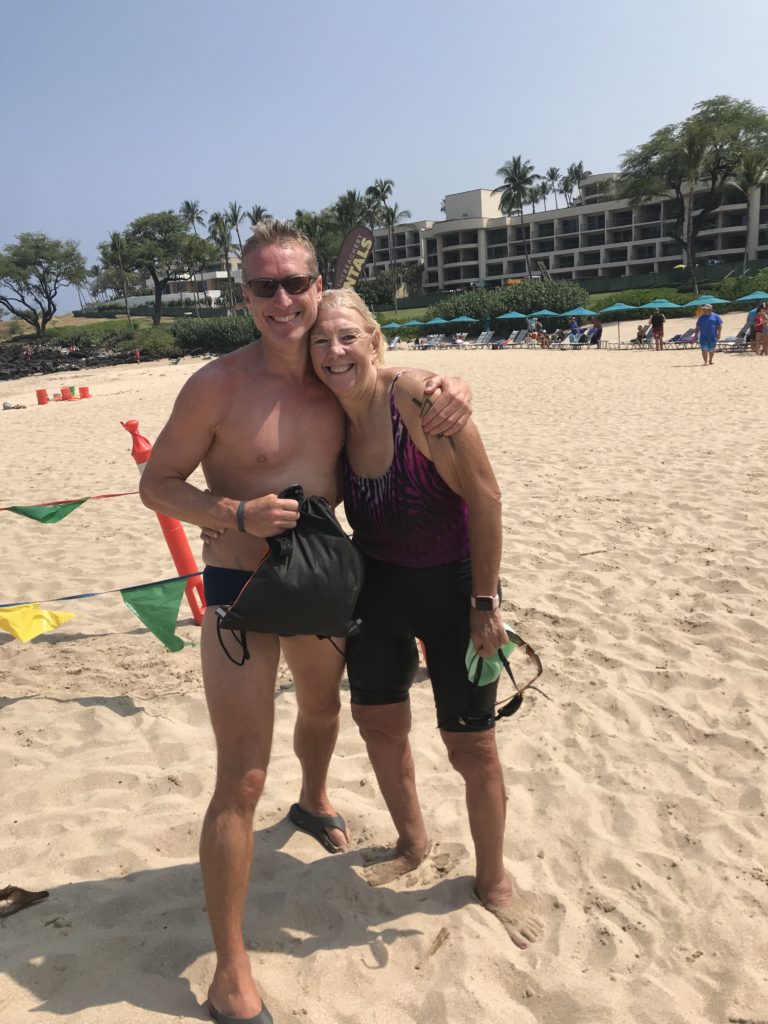 Peggy Kent with Colin Clark after the swim. 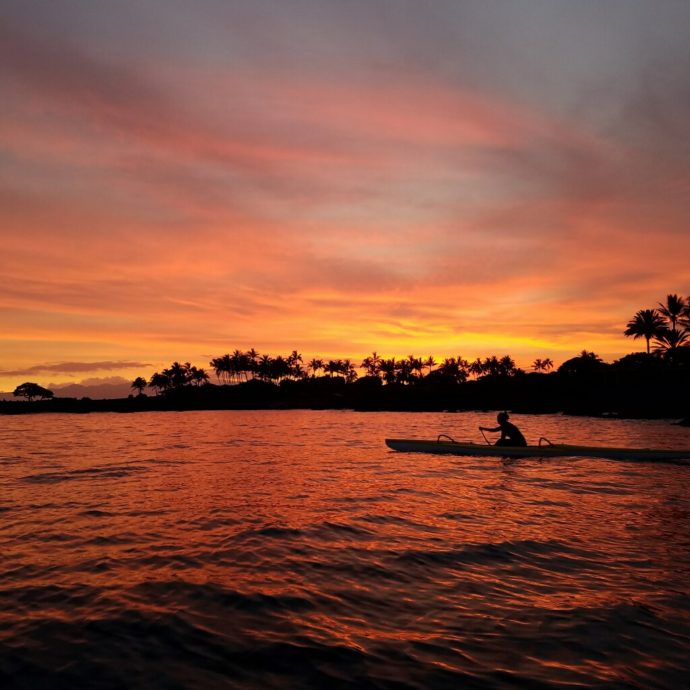 Sunrise, Thursday June 7, 2018. As photographed by our Ala Kai’i Nalu team member Randall. Breathtaking! Thanks to Barbara Kildow Brand new Magic Chef 50 bottle wine fridge $300
I have just returned to Kona after two weeks touring Japan and S. Korea. Where ever I went when folks asked us where we were from, and we said Hawaii, they immediately asked about the Volcano. Those of us who have homes on the Big Island are constantly being contacted by friends, relatives and even strangers as to how we are doing in Hawaii in regards to what they have seen in the media. Those of us who have homes at Hualalai, but have not been here during the major portion of the eruption wondered how our neighbors were fairing, what’s the Vog effect? What’s the earthquake effect? Are people showing up, are there guests at the hotel? To that end I’m asking members to share their experiences with us on this blog. Please let us know how all are faring, so we can share it with our readers. Yesterday, we went into Kona to Safeway. As we passed the airport in the afternoon the Vog seemed to worsen. By the time we reached Safeway the Vog was pretty heavy, not dangerous, but you couldn’t see the ocean. Today, at Hualalai, we had Vog, but it wasn’t too bad. Following is an update of what’s happening as of today at Kilauea. |


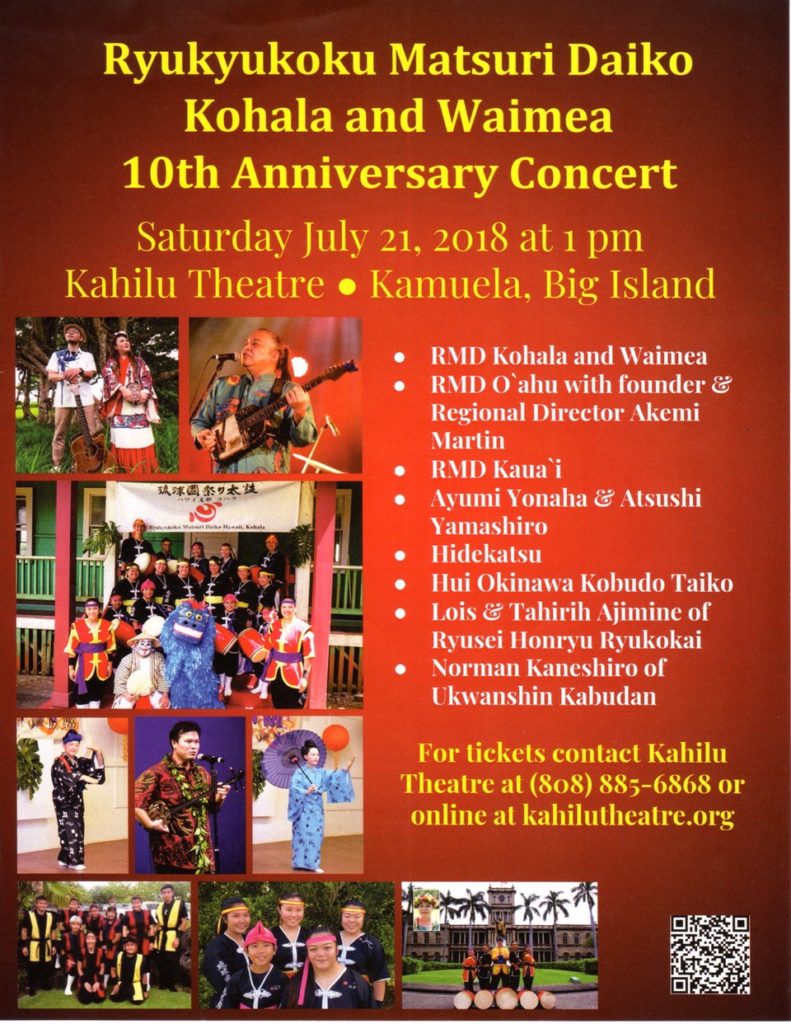


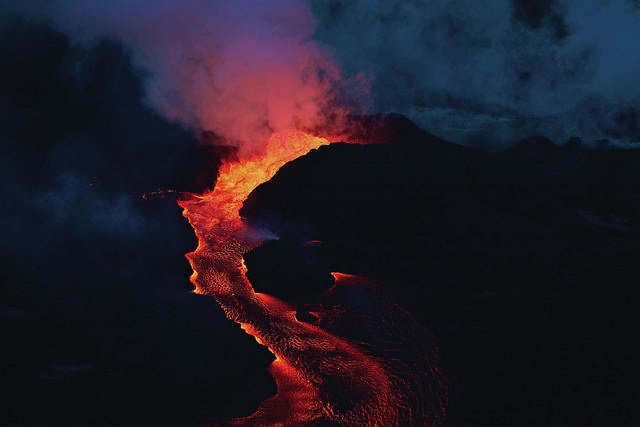
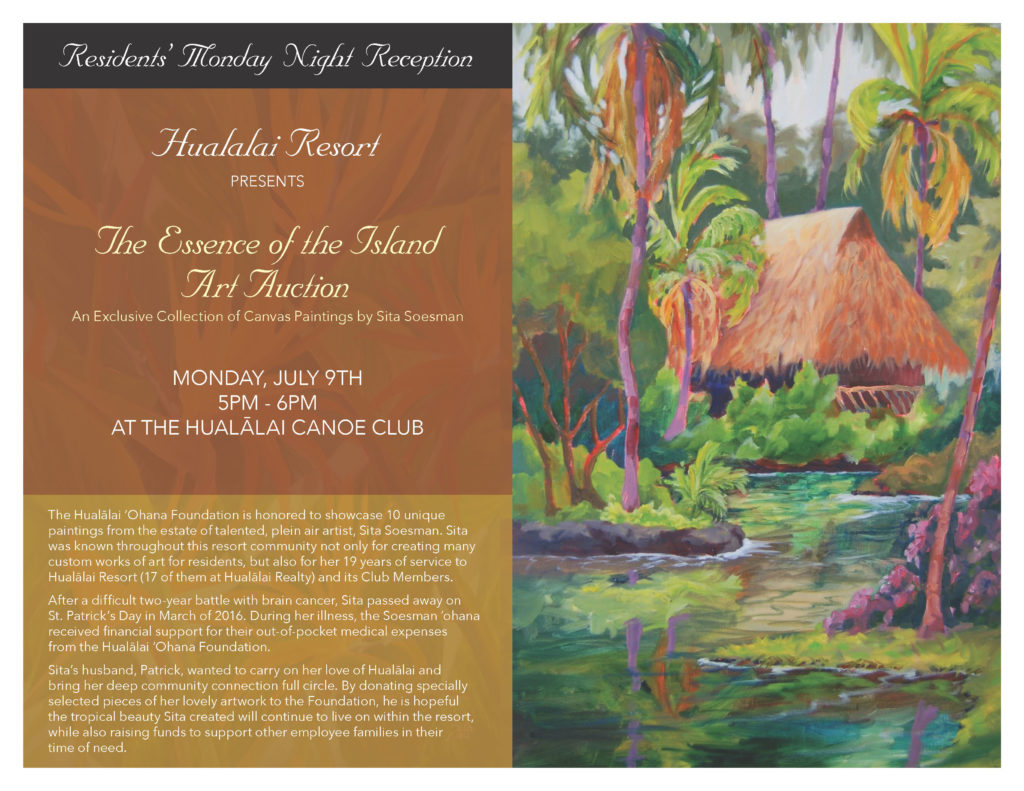

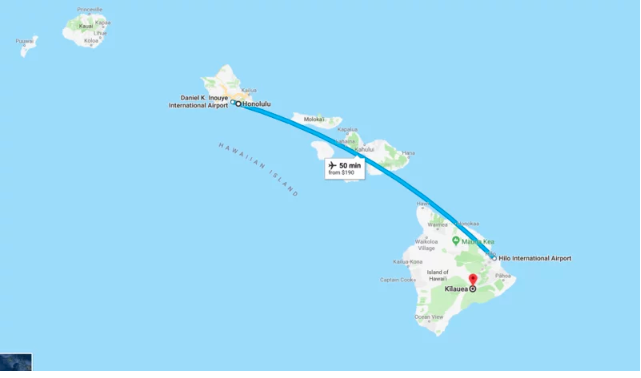
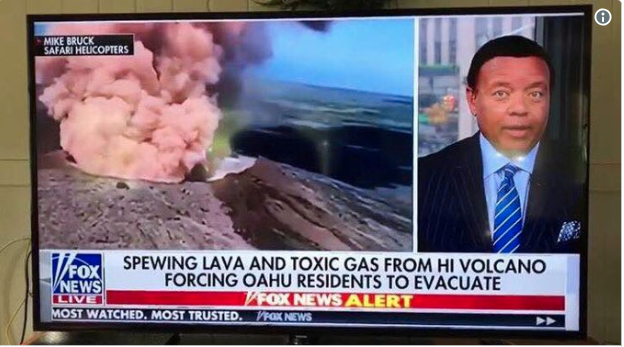
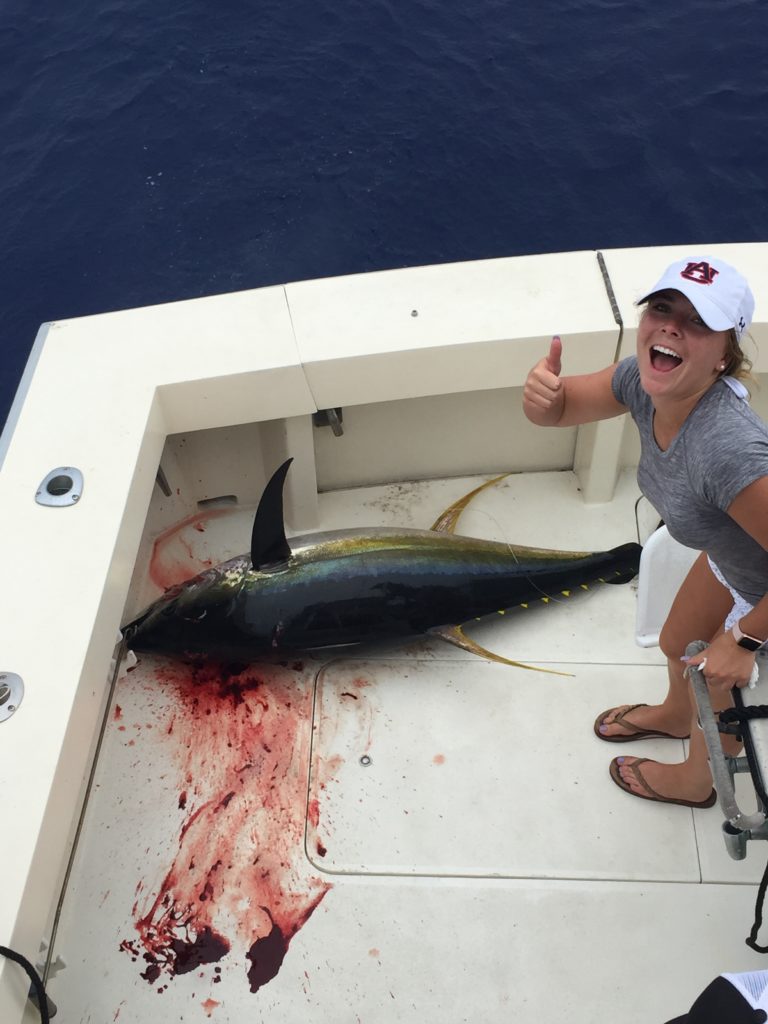
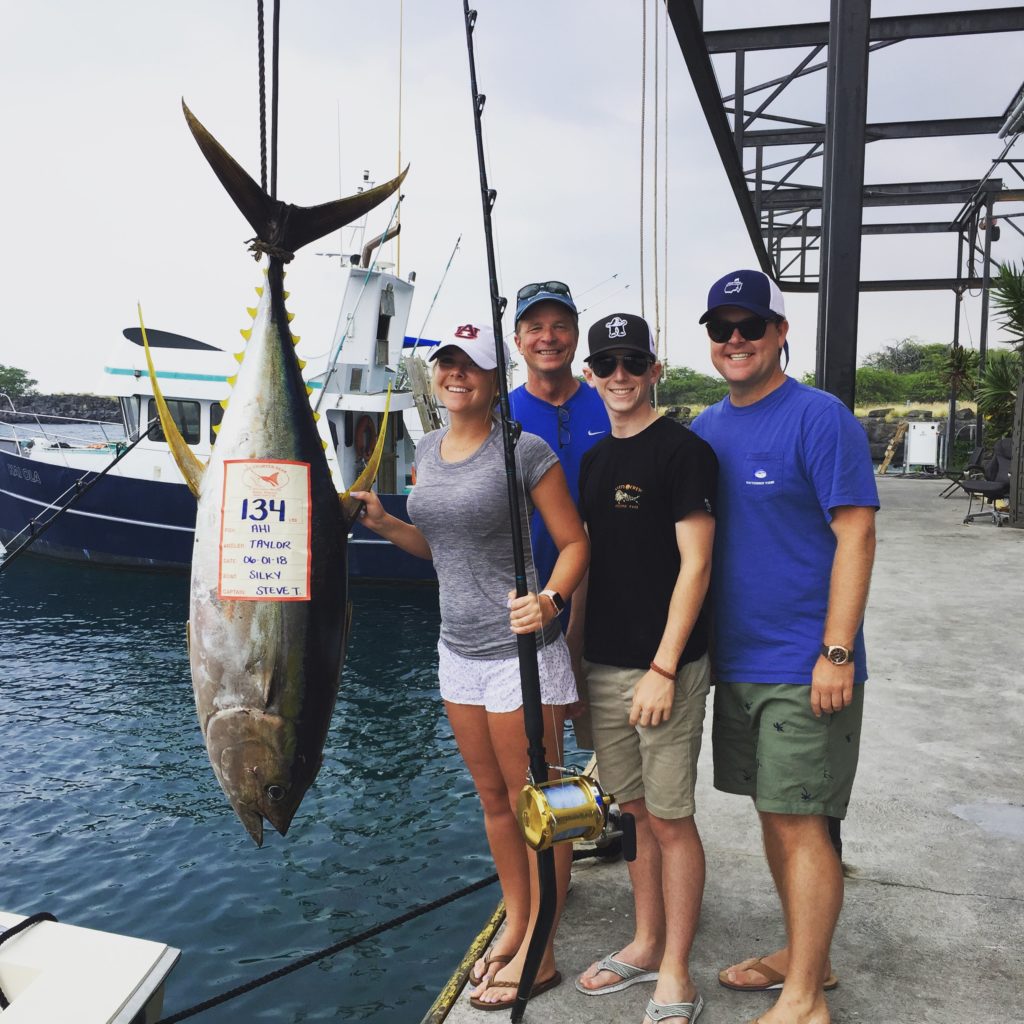
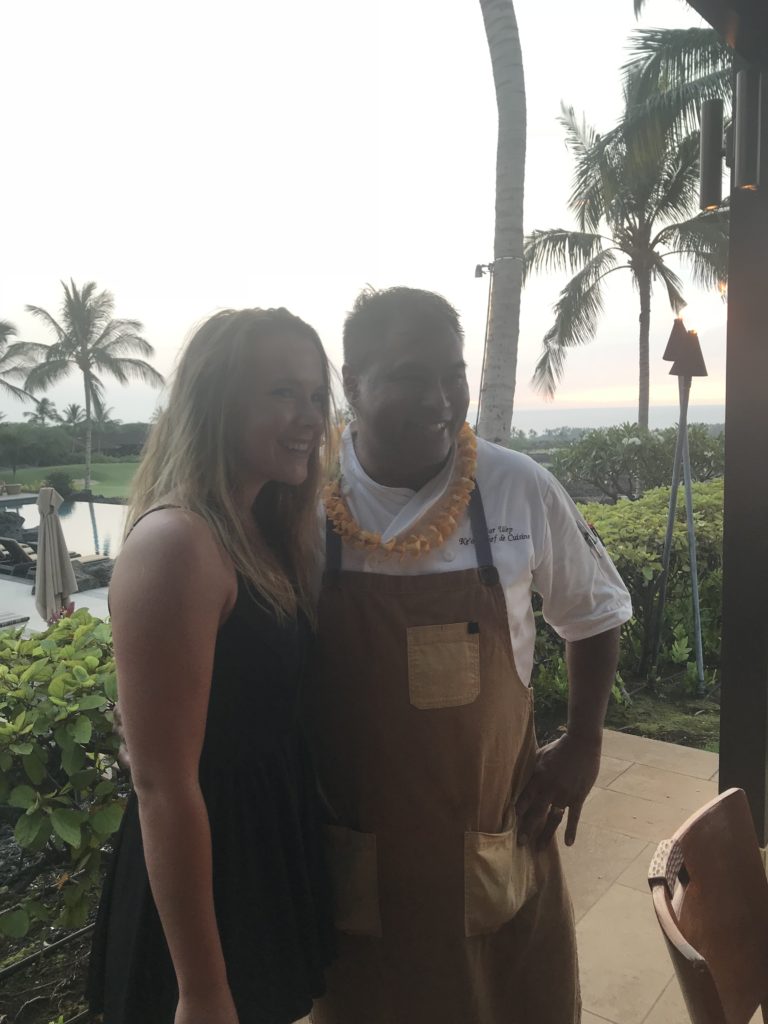
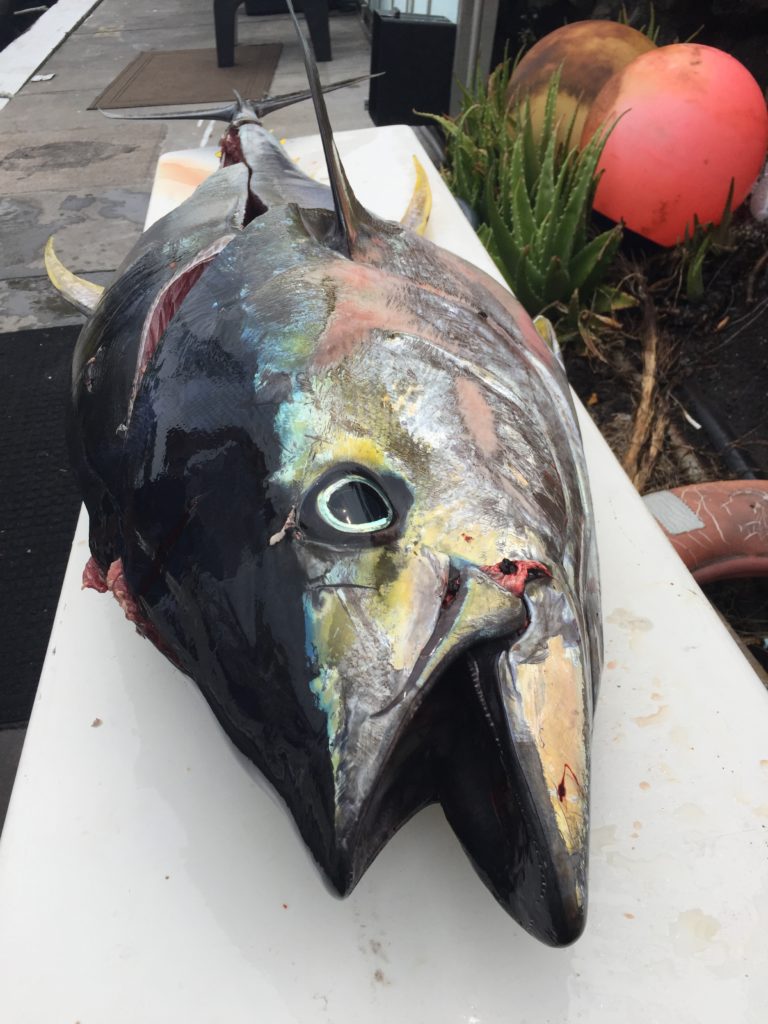 Voila. It’s time to eat!
Voila. It’s time to eat!